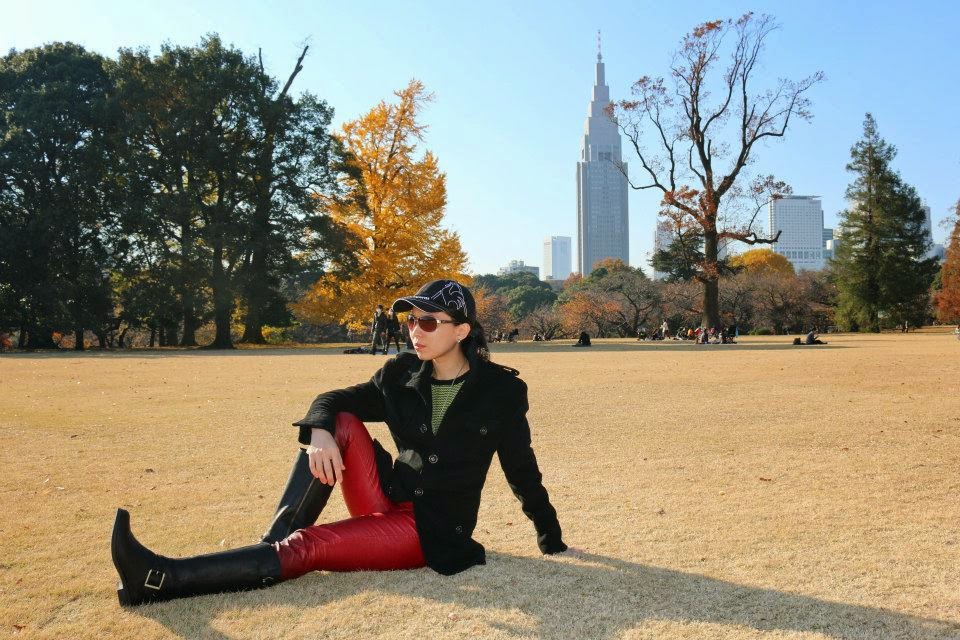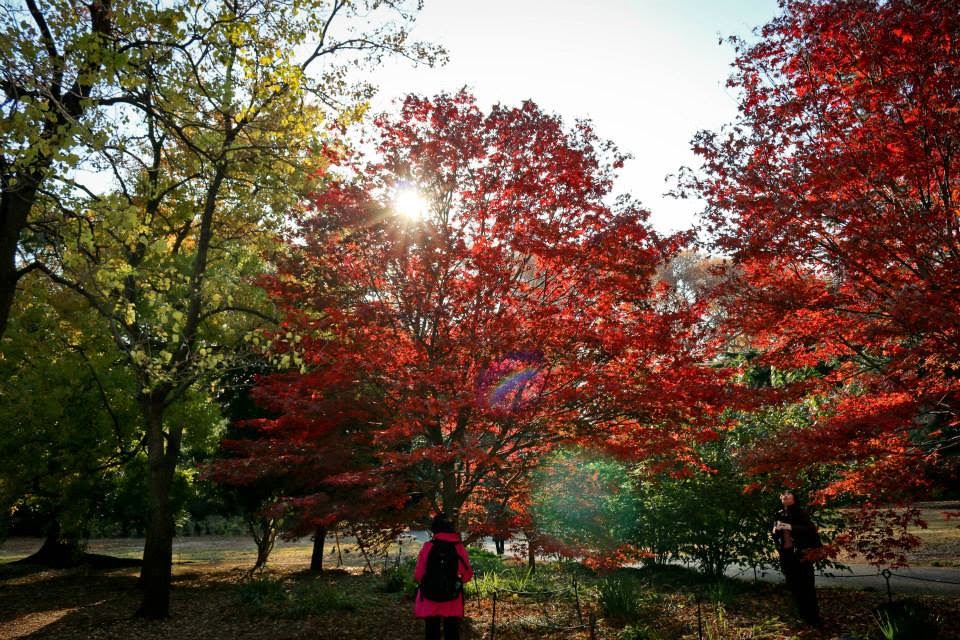Shinjuku Gyoen in Tokyo

Shinjuku Gyoen is one of Tokyo's largest and most popular parks. Located just a short walk from Shinjuku Station, the paid park's spacious lawns, meandering walking paths and tranquil scenery provide a relaxing escape from the busy urban center around it. In spring Shinjuku Gyoen becomes one of the best places in the city to see cherry blossoms.
Shinjuku Gyoen is comprised of three different types of gardens:
The oldest is a traditional Japanese landscape garden featuring large ponds dotted with islands and bridges. Well manicured shrubs and trees surround the water together with several pavilions and the Kyu Goryotei (also called the Taiwan Pavilion) which was built on the occasion of the wedding of the Showa Emperor. A chrysanthemum exhibit is held during the first two weeks of November in the Japanese garden with flower displays and large, temporary pavilions erected around the grounds.The park's other main gardens include a symmetrically arranged formal French garden, and an English landscape garden featuring wide, open lawns surrounded by flowering cherry trees. The rest of the park consists of forested areas, lawns and several structures including a restaurant, an information center and an art gallery. There is also a beautiful greenhouse with many tropical and subtropical flowers.
Shinjuku Gyoen is home to a large number of cherry trees of more than a dozen different varieties. From late March to early April, more than 400 somei yoshino trees blossom around the English garden turning the lawns into one of Tokyo's most popular and pleasant hanami spots. In addition, the park has numerous early and late blooming cherry trees which provide an extended cherry blossom viewing season (mid March to late April) for those who miss the main season.
How to get there
Shinjuku Gyoen has three gates:
Shinjuku Gate is a ten minute walk east from the "New South Exit" of JR Shinjuku Station or a five minute walk from Shinjukugyoenmae Station on the Marunouchi Subway Line. Okido Gate is also a five minute walk from Shinjukugyoenmae Station on the Marunouchi Subway Line. Finally, Sendagaya Gate is a five minute walk from JR Sendagaya Station on the local Chuo/Sobu Line.
Hours and Fees
Hours: 9:00 to 16:30 (entry until 16:00)
Closed: Mondays (or following day if Monday is a national holiday), December 29 to January 3.
There are no closing days during the cherry blossom season (late March to late April) and the Chrysanthemum Exhibition (first half of November).
Admission: 200 yen
My accommodation in Tokyo: Shinjuku Prince Hotel, good location, room is quite cramp, service was okay, price under RM500 per night.
7Eleven, Shops, Restaurants, Shopping Malls and Train Station, all nearby, just a short walking distance
You'll never be hungry in Tokyo
Try food in 7Eleven, there are good.
Vending machine available everywhere
Branded store, all at only a short walking distance, bring your passport for tax refund.
Many Chinese restaurants around Shinjuku area too
Set Lunch at only $780yen
Fried Noodle, $680yen
Go for restaurant located on the first level, they served cheaper food, especially lunch time promotion
Set Meal under $1000yen
For dinner, why not spend a little more to indulge in some good seafood, you're in Japan. You'll spend around RM200-300 for dinner for 2 to 3 person.
Asahi Beer
Grilled Fish
BBQ Scallop
BBQ Oyster
Tempura with rice

Everydayfoodilove.co/ angeline-ong-yoga.blogspot.com. Thank you for reading our posts. Our team media coverage touches mostly on lifestyle events and focuses on happening scenes in Kuala Lumpur and Kota Kinabalu. Invite us for food reviews, travel and hotel reviews, KL clubbing reviews and product launches. Our other interests include the movies, technology and photography. Subscribe to my facebook page. Contact us via my email at: [email protected] or [email protected] or [email protected]












































Comments